Viktor Nikitin
Murine AI excels at cats and cheese: Structural differences between human and mouse neurons and their implementation in generative AIs
Oct 28, 2024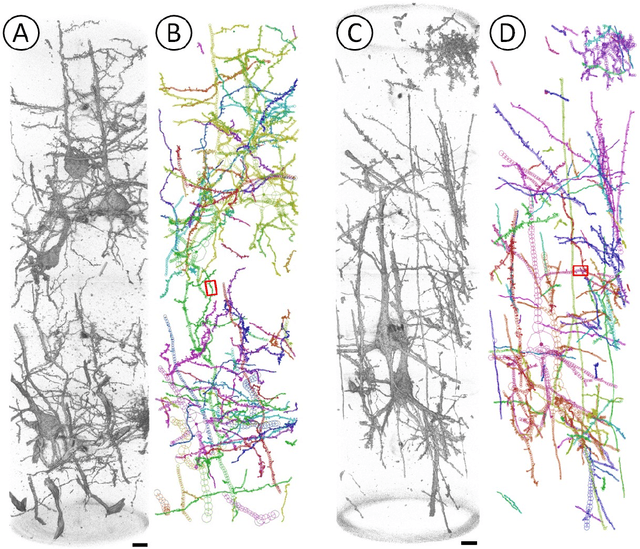
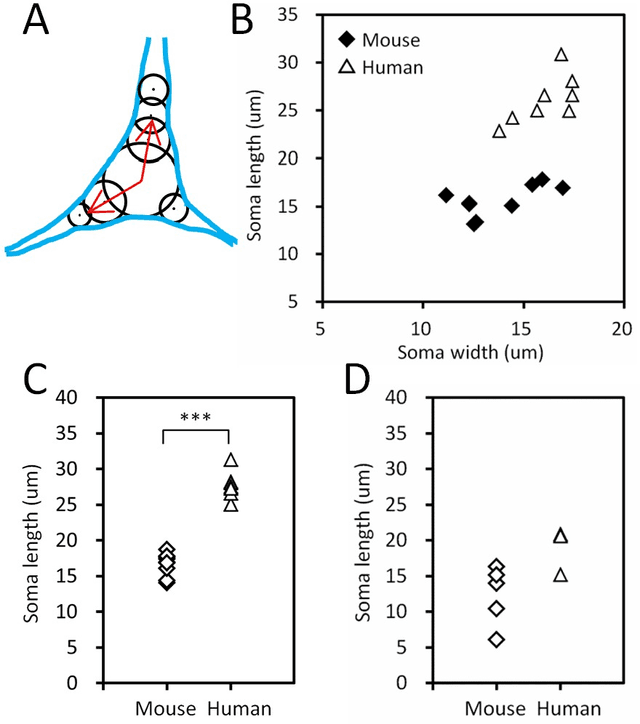
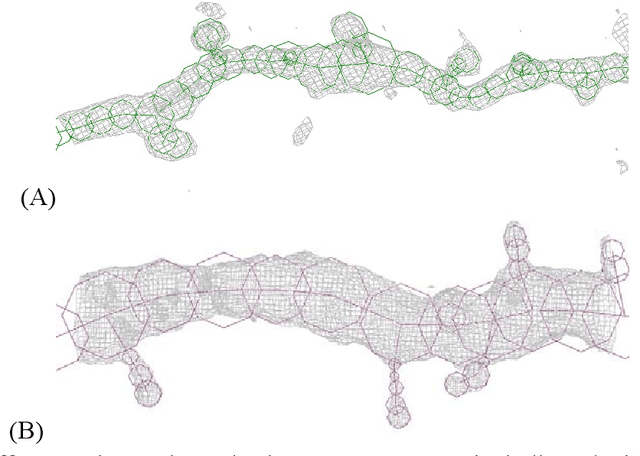
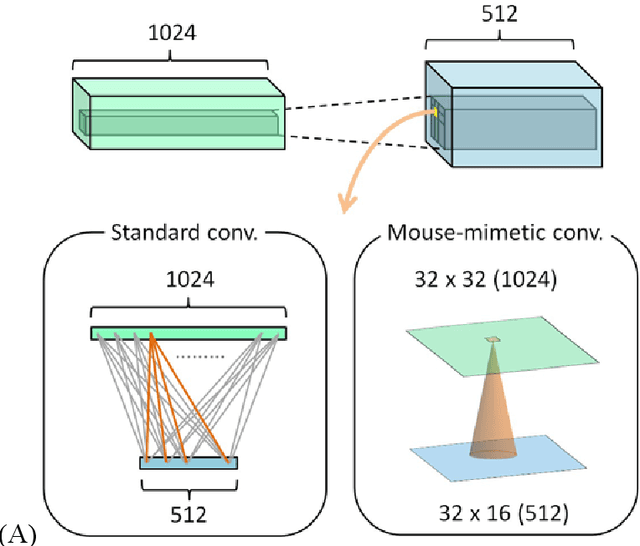
Abstract:Mouse and human brains have different functions that depend on their neuronal networks. In this study, we analyzed nanometer-scale three-dimensional structures of brain tissues of the mouse medial prefrontal cortex and compared them with structures of the human anterior cingulate cortex. The obtained results indicated that mouse neuronal somata are smaller and neurites are thinner than those of human neurons. These structural features allow mouse neurons to be integrated in the limited space of the brain, though thin neurites should suppress distal connections according to cable theory. We implemented this mouse-mimetic constraint in convolutional layers of a generative adversarial network (GAN) and a denoising diffusion implicit model (DDIM), which were then subjected to image generation tasks using photo datasets of cat faces, cheese, human faces, and birds. The mouse-mimetic GAN outperformed a standard GAN in the image generation task using the cat faces and cheese photo datasets, but underperformed for human faces and birds. The mouse-mimetic DDIM gave similar results, suggesting that the nature of the datasets affected the results. Analyses of the four datasets indicated differences in their image entropy, which should influence the number of parameters required for image generation. The preferences of the mouse-mimetic AIs coincided with the impressions commonly associated with mice. The relationship between the neuronal network and brain function should be investigated by implementing other biological findings in artificial neural networks.
X-ray nano-holotomography reconstruction with simultaneous probe retrieval
Jul 29, 2024Abstract:In conventional tomographic reconstruction, the pre-processing step includes flat-field correction, where each sample projection on the detector is divided by a reference image taken without the sample. When using coherent X-rays as probe, this approach overlooks the phase component of the illumination field (probe), leading to artifacts in phase-retrieved projection images, which are then propagated to the reconstructed 3D sample representation. The problem intensifies in nano-holotomography with focusing optics, that due to various imperfections creates high-frequency components in the probe function. Here, we present a new iterative reconstruction scheme for holotomography, simultaneously retrieving the complex-valued probe function. Implemented on GPUs, this algorithm results in 3D reconstruction resolving twice thinner layers in a 3D ALD standard sample measured using nano-holotomography.
Scalable and accurate multi-GPU based image reconstruction of large-scale ptychography data
Jun 14, 2021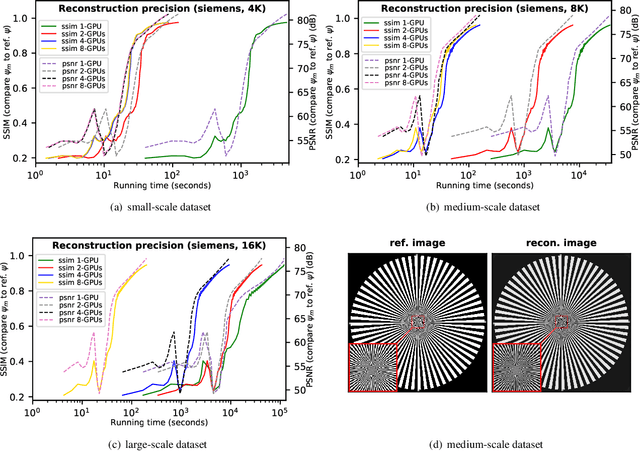
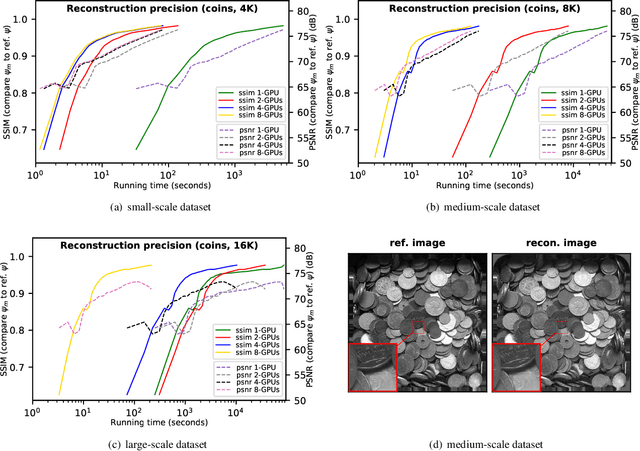
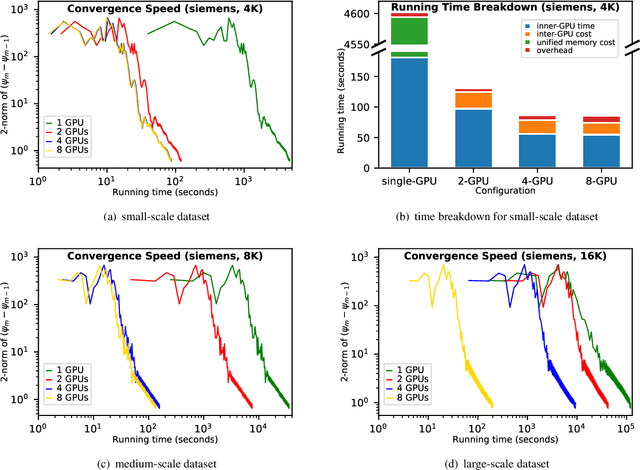
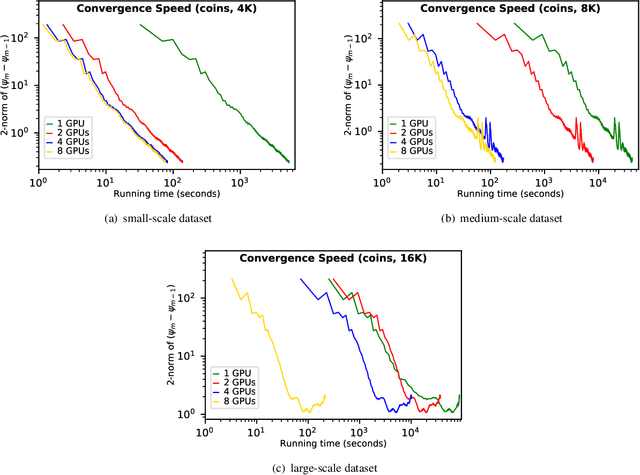
Abstract:While the advances in synchrotron light sources, together with the development of focusing optics and detectors, allow nanoscale ptychographic imaging of materials and biological specimens, the corresponding experiments can yield terabyte-scale large volumes of data that can impose a heavy burden on the computing platform. While Graphical Processing Units (GPUs) provide high performance for such large-scale ptychography datasets, a single GPU is typically insufficient for analysis and reconstruction. Several existing works have considered leveraging multiple GPUs to accelerate the ptychographic reconstruction. However, they utilize only Message Passing Interface (MPI) to handle the communications between GPUs. It poses inefficiency for the configuration that has multiple GPUs in a single node, especially while processing a single large projection, since it provides no optimizations to handle the heterogeneous GPU interconnections containing both low-speed links, e.g., PCIe, and high-speed links, e.g., NVLink. In this paper, we provide a multi-GPU implementation that can effectively solve large-scale ptychographic reconstruction problem with optimized performance on intra-node multi-GPU. We focus on the conventional maximum-likelihood reconstruction problem using conjugate-gradient (CG) for the solution and propose a novel hybrid parallelization model to address the performance bottlenecks in CG solver. Accordingly, we develop a tool called PtyGer (Ptychographic GPU(multiple)-based reconstruction), implementing our hybrid parallelization model design. The comprehensive evaluation verifies that PtyGer can fully preserve the original algorithm's accuracy while achieving outstanding intra-node GPU scalability.
 Add to Chrome
Add to Chrome Add to Firefox
Add to Firefox Add to Edge
Add to Edge